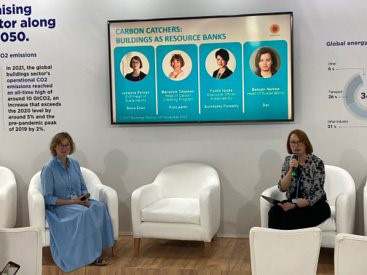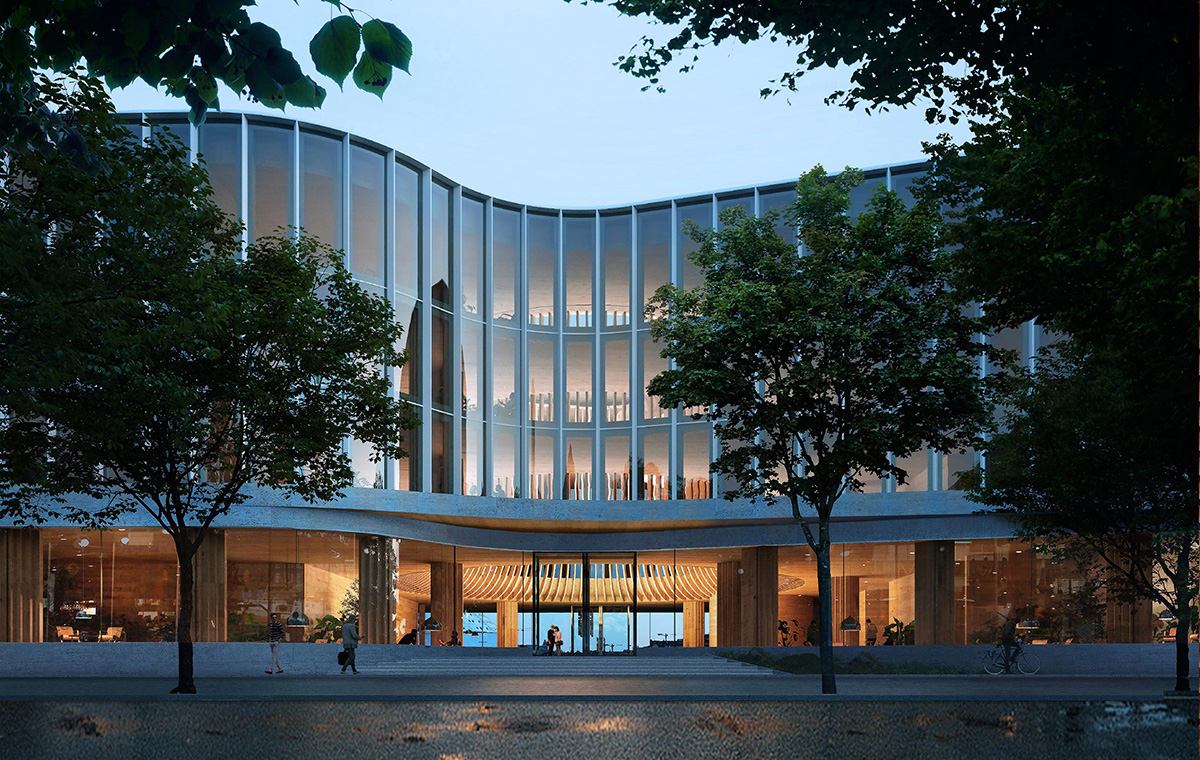Photo: Anttinen Oiva Architects
Some described the vast exhibition halls with seemingly endless presentations in Egypt as an environmental festival. Continual geopolitical talks occurred about a “polluter pays” tax for large carbon-emitting countries, and activists were sceptical of corporate greenwashing as approximately tens of thousands of companies were said to have registered.
Tucked away in the Building Pavilion, sponsored in part by Stora Enso and hosted by the Global Alliance for Buildings and Construction and next to the We Mean Business Coalition, modern-day business activists were not waiting for government leadership. They have found and are implementing viable solutions on a mega-scale. Some international interesting players in the construction industry were hosted by Stora Enso Wood Products in a dialogue on their latest achievements in reducing and removing carbon dioxide, the major cause of climate change.

Stora Enso Wood Products at COP27
Carbon Catchers: Buildings as resource banks
hosted by Johanna Pirinen, SVP Head of Sustainability
The construction industry accounts for nearly 40% of all global energy related emissions. And the number is increasing.1 The target deadline to cut CO₂ emissions by 50% is 2030, only seven years away. Immediate results that we can see and touch in spectacular buildings and biodiverse forests breathe hope that fossil fuel use can be reduced by cutting demand for it.

Stora Enso’s new headquarters in Finland will store 7 000 tonnes of carbon dioxide. To put that in perspective, diesel produces 1 tonne after driving 6 000 km.
Photo: Anttinen Oiva Architects
“So much has to be done by 2030. We do not have time to wait for 10-15 years to develop new technology. We have to act now, and the solution is already here. Instead, we should be standardising low carbon design now,” said Yuuko Iizuka, Sumitomo Forestry, a Japanese logging and processing company which businesses extend to construction. The sustainable wood industry stood out among many other construction initiatives because most are still in the research and development phase. Concrete, for example, is responsible for 8% of the world’s CO₂ emissions. There have been encouraging breakthroughs in how to reduce the carbon footprint of cement and concrete and increased efforts to recycle it (Heidelberg), but they are not anywhere near the mass market scale that the wood industry is operating at in terms of renewable and circular economies.
“Solutions for decarbonising the construction sector already exist. Buildings can be both a natural carbon capsule to store CO₂ and a highly effective way of removing CO₂ from the atmosphere as timber grows in biodiverse forests,” said the host of the presentation, Johanna Pirinen, SVP Head of Sustainability, Stora Enso Wood Products.
“We have all the know-how on what needs to be done. Our solution to store carbon is workable and affordable to implement but we still need more than education and awareness. We need incentives to drive [carbon capturing] to the next level” said, Balsam Nehme, of DAR, leading international consulting organisation.
Watch the full presentation here:
Carbon Catchers: Buildings as resource banks.
Watch More from the Buildings Pavilion.





